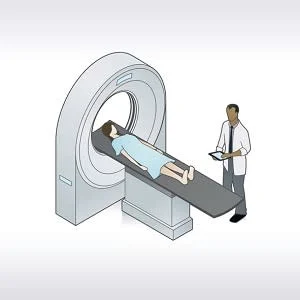During
magnetic resonance imaging (MRI) technology’s dawn years, the cost vs the performance
gains associated with stronger magnetic fields were open questions. The idea of
using low-field MRI (< 1.5 T of magnetic field) is not new, but the performance
cost equation favoured larger magnetic fields. For the last 30 years, the MRI standard
has been 1.5 T, with the field steadily transitioning to 3 T.
During the pandemic, Dr Jeffrey C. Weinreb, director and chief of Yale’s MRI services, noticed a renewed interest in low-cost low-field MRIs given the improvements brought forth by technological advances, including in artificial intelligence. These advancements have improved the speed, quality, cost, and footprint of MRI scanners to the degree that the performance cost considerations may have changed. Furthermore, many MR services struggled to provide standard imaging services without exposing patients and staff to the virus. To deliver imaging services in the ICU without transporting patients and clinical support equipment seemed like an attractive option.
At Yale’s neurosciences intensive care unit (ICU), a low-cost low-field MRI device was used after the FDA’s regulatory relaxation to care for COVID-19 patients. Despite some imaging disadvantages, their device helped manage patients while minimizing infection risks from COVID-19. This drew the interest of neurologists and neurosurgeons for emergency department and operating room use. It also holds long-term implications for radiology.
Disruptive technologies tend to ‘underperform established products in mainstream markets.’ They start by ‘gaining a foothold in the low-end (and less demanding) part of the market and successively move upmarket through performance improvement, finally displacing the incumbent’s product.’ Dr Weinreb mentioned its potential uses could affect point-of-service brain MRI in emergency settings, outpatient imaging in non-radiologist offices, mobile screening for neurovascular disease, and use in resource-poor locales. Low-field MRIs also provides fewer artefacts from metallic implants and can give better contrast on T1-weighted images.
Considering the implications for radiology, he warns: ‘If we ignore it (low-field MRI) and do not simultaneously make measured, logical, competent decisions for the near-term health of our established radiology businesses and focus adequate resources on this disruptive technology, we will be in trouble.’
To move forward, Dr Weinreb urges the field to accept the arrival of low-field, low-cost MRI scanners have arrived and adapt to benefit patients and radiology. ‘The genie is out of the bottle, and he is not going back.’










